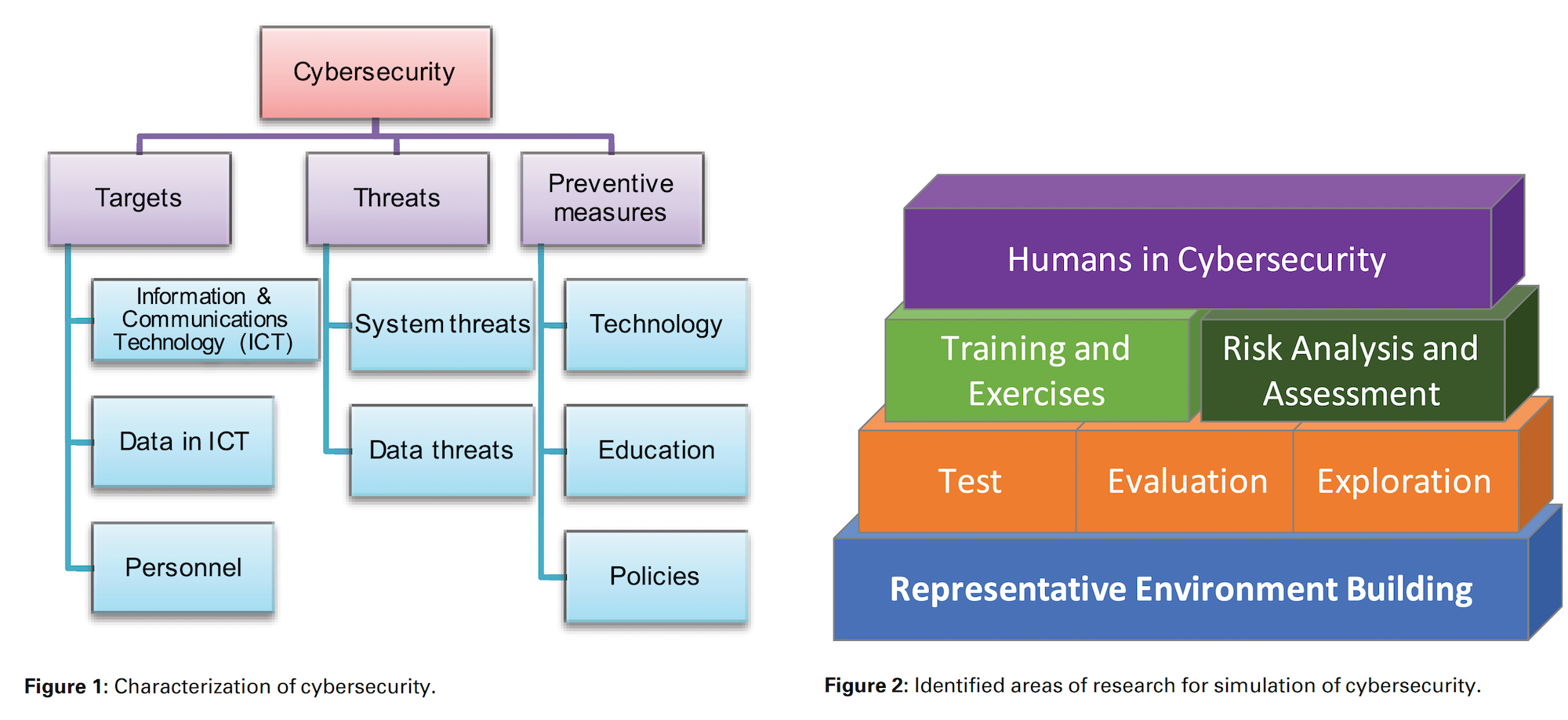Utilizing Simulation in Cybersecurity (New Paper!)
Cybersecurity threats come in many forms, from data breaches to critical infrastructure attacks. In this paper, we explored the vital role that simulation plays in tackling the fast-evolving cybersecurity landscape, focusing on both present challenges and promising future directions in the literature and practice. This work was conducted in collaboration with my co-authors, including Jose J. Padilla, Daniele Vernon-Bido, Saikou Y. Diallo, Ross Gore, and Sachin Shetty.
We began this work by breaking down cybersecurity into three essential components: targets, threats, and preventive measures shown in figure 1 below. Later, we highlighted five key areas where simulation is making an impact: environment building, testing and evaluation, training exercises, risk assessment, and incorporating human factors into cybersecurity (see figure 2). We then use these two to guide our literature review and categorize cybersecurity simulation research.

As the outcome of this study, we emphasize the need to include human behavior in cybersecurity simulations, as understanding this element is essential to anticipating and mitigating attacks that rely on social engineering. Looking forward, we call for progress in data collection, the development of new theoretical models, and a deeper focus on behavioral aspects in simulation. These advancements will lead to more robust and realistic simulation environments to secure cyberspace. You can find the open access paper here.

